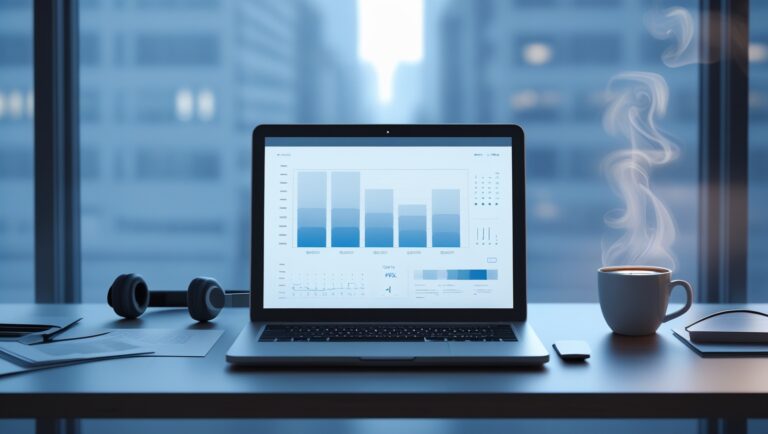Why Indicators Were Holding Me Back — and What I Use Now
Why Indicators Were Holding Me Back — and What I Use Now
When I first started trading, I loaded up my charts with every indicator I could find — RSI, MACD, VWAP, Bollinger Bands, moving averages… you name it. I thought more tools would mean better trades. But I was wrong.
The truth is, indicators were holding me back.
They made me second-guess everything. One would say buy, another would say sell. Sometimes all of them looked “perfect,” and the trade still failed. I realized I wasn’t building a strategy — I was building confusion.

Table of Contents
Indicators Gave Me a False Sense of Security
At one point, I felt like I needed confirmation from three or four indicators before I could enter a trade. But by the time everything “lined up,” the move was already gone. I was always late.
Worse, when I lost, I didn’t know why. Was it the RSI? The EMA crossover? The MACD divergence? It felt like guesswork. I couldn’t build confidence in any setup because it all depended on lagging tools.
The Breakthrough: Clean Charts, Clear Thinking
Eventually, I stripped everything away. I challenged myself to trade with just price action and volume — nothing else. What happened? My decisions got sharper, faster, and more consistent.
Now, I use:
- Key support and resistance levels
- Volume spikes
- Pre-market gappers
- Trendlines and consolidation zones
That’s it. I explain exactly how I apply this simple approach inside my ebook, where I break down my daily routine and setups that helped me finally pay my bills with trading.
Trading Became Simpler — and Profitable
The less noise I had on my screen, the better I traded. I could see what really mattered: price behavior, levels, and momentum. I wasn’t waiting for indicators to tell me what was already happening — I could read the chart myself.
I Built Trust in My Own Eyes, Not Signals
The biggest change? I stopped relying on signals. I started trusting my preparation. Every morning, I build a clean watchlist of 4–6 stocks, draw key levels, and wait for volume to confirm a move. This gave me control — and freedom.
Now, I don’t chase alerts. I don’t scroll Twitter looking for someone’s setup. I trade my plan, and that’s what made me consistent.
Want to Stop Relying on Indicators Too?
If you’re tired of overcomplicating your trading with tools that give mixed signals, I get it. I’ve been there. That’s why I created my ebook — to give you a blueprint that works without indicators or expensive software.
You don’t need complexity. You need clarity.
Once I removed all those flashy indicators, something interesting happened: I started trusting my instincts more. I wasn’t leaning on lagging signals — I was watching the price and volume play out in real time, and that gave me an edge I never had before.
It also made my trading faster. Instead of waiting for three indicators to align, I could act the moment volume confirmed a breakout or a clean rejection off a level. I wasn’t late anymore — I was ready before the move even happened.
Another benefit? I finally understood my wins and losses. When I lost, I could pinpoint exactly what went wrong — whether it was a fakeout, low volume, or poor risk management. I wasn’t blaming an indicator anymore. That clarity helped me improve faster.
Keeping my charts clean also made me more confident. When I sit down to trade now, I’m not overwhelmed. I’m not staring at five lines crossing and wondering what they mean. I see a clear price structure and wait for my setup.
And the setup itself hasn’t changed much over time. I trade simple momentum breakouts, pullbacks to demand zones, and volume-based continuation moves. These patterns repeat, and the more I focus on them, the better I execute.
One thing that really helped me stay consistent was creating a watchlist before the market opens. I filter for volume, catalyst, price range, and clean chart structure. Then I draw my levels and stay disciplined. I talk more about this in detail inside my ebook.
I also realized that indicators often gave me a sense of hope — like “it’s okay to hold longer because the MACD is still bullish.” But price always tells the truth. If I had just followed raw price action, I would’ve cut the trade sooner.
Most new traders think they need fancy tools to win. But in my experience, the real winners are the ones who learn to read what the market is actually doing, not what a signal says it might do. That shift is powerful.
It wasn’t just about removing indicators — it was about reprogramming the way I think as a trader. I used to want confirmation. Now, I want control. I want my trades to be based on evidence I can see and understand without needing someone else’s opinion.
Even with a small account, this mindset shift was huge. Because I wasn’t overtrading or reacting emotionally to indicators flipping back and forth, I protected my capital and only entered clean setups with good risk-reward.
If you’re overwhelmed by too many tools and tired of inconsistent results, I encourage you to try what worked for me. Clean your chart. Focus on volume, key levels, and price structure. It’s not magic — it’s just simple trading that works.
And if you want to fast-track your learning, my full process is outlined in my ebook — including how I pick stocks, read the market, and only trade 2–3 times a week while still paying my bills. If I can do it, you can too.
Looking back, I realize I was using indicators as a crutch because I lacked confidence. I thought if the chart looked more “professional” or had more confirmation tools, I’d somehow become a better trader. But the opposite happened. I became slower, more reactive, and way more emotional.
Now, every trade I take is based on a plan I understand and trust. There’s no guessing. No dependency on software. Just me, a clean chart, and my rules. I know when to get in, when to get out, and when to walk away — and that consistency is what turned everything around for me.
If you want to simplify your strategy and finally build consistency, I lay it all out in my ebook. It’s the exact approach I follow today to spot stocks before 9:30AM, create a high-probability watchlist, and take only the setups that give me the best chance to win — without using a single indicator.

Stay ahead in the stock market! Subscribe to our newsletter and receive exclusive stock flow reports, trading insights, and actionable tips directly in your inbox. Join thousands of traders who get our updates first.







